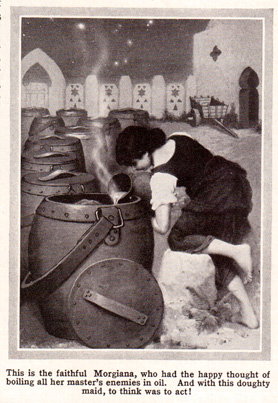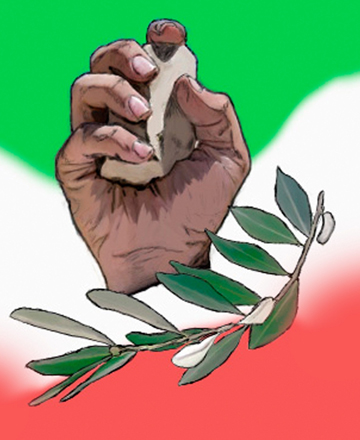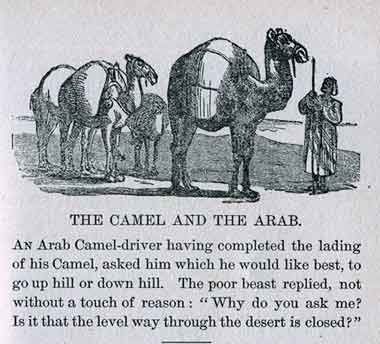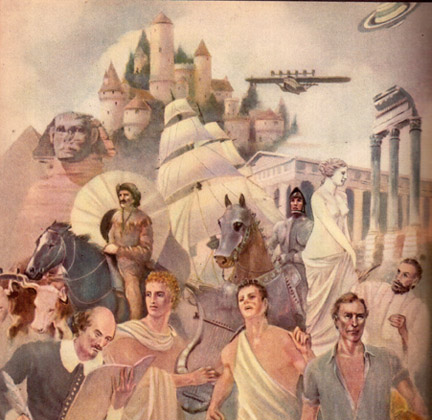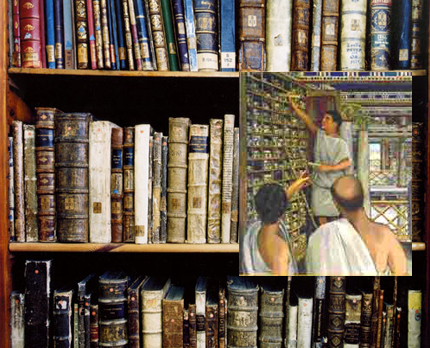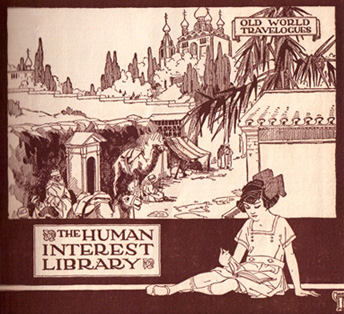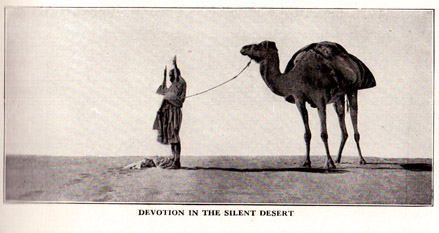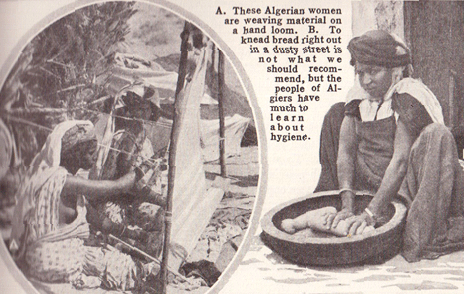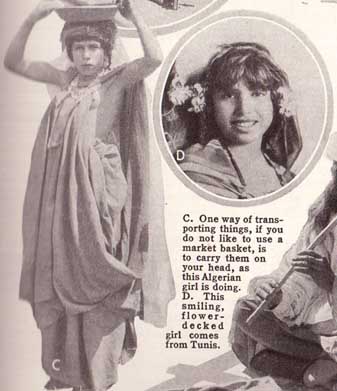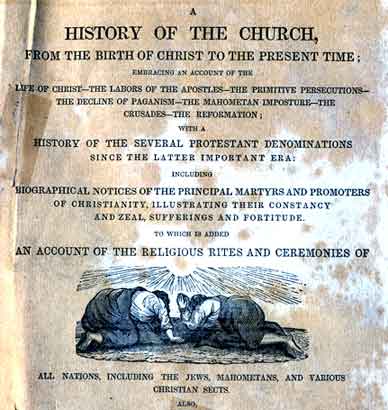
One of the books owned by a great, great aunt of mine in Cleveland was A History of the Church, etc., published in 1833. The bottom of the frontispiece is torn, so I do not know the publisher, although I suspect it was printed in Boston. It is a general history of Christianity with extended comments on other religions, including “Mahometanism.” The author is a certain C. A. Goodrich, who is decidedly Protestant and as unfriendly to Roman Catholicism as he is to Islam and Hinduism. Several parts of the text, which stretches a robust 504 pages, deal with Islam and are interesting for the biased perspective of the time. The history of the Church is according to periods, and Period V is labeled “The Rise of Mahometanism” (at the top of the pages of the chapter); the longer title is “The Period of the Rise of the Mahometan Imposture will extend from the establishment of the supremacy of the Roman Pontiffs, A.D. 606, to the first Crusade, A. D. 1095.” Period VI covers the Crusades, followed by the Reformation and then a very long chapter on the Puritans.
At the start of the section is a small lithograph of Muhammad, mounted on a steed with a sword in hand. Some of the information is descriptive; some even praises Muhammad, but it is clear that the author despises Islam as the excerpts below well show:
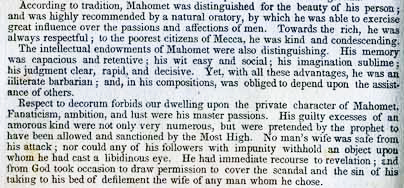
A History of the Church, 1833, p. 96
